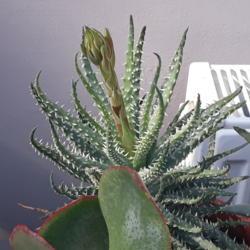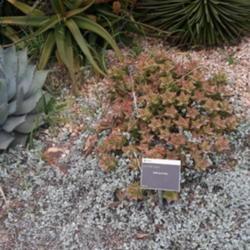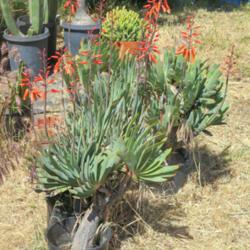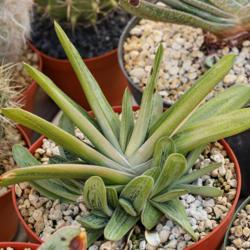So, up in front, this will a way to save the progress of it, and open to critique(but please PM me instead of writing here).
I am writing this article as way to address the confusion found among Cactus & Succulent newcomers as well as those not all that well informed on the subject
I've opted to spare the reader the intricacies of taxonomic classification, in short it refers to researching the genetic link of species via molecular phylogeny(DNA comparison), at least by the newest standard.
Plants are going to be clumped by some form of common denominator, usually in the form of Family (eg. Cactaceae, Apocyanaceae, Asparagaceae), or in the very least under Genus(Euphorbia, Ceropegia), with a few terms being thrown in between such as Tribe or Sub-Family.
I will begin with some of the most popular and widespread: Aloeae, sub family of Asphodeloideae
The Sub-Family Aloeae has its native habitats spread out across Africa and the Arabian Peninsula with some species being found on islands in the Indian Ocean. Habitat is variable as well, ranging from the Namibian Desert, to the rocky outcrops of Table Mountain in South Africa, all the way to Soccotra Island in Yemen. It consists mainly of leaf succulents whose Genera include: Aloe, Aloiedendron, Aristaloe, Gonialoe Aloiampleos, Kumara, Haworthia, Haworthiopsis , Tulista, Gasteria and Astroloba.
Main features of this family are the mainly red to yellow flowers poking out on the inflorescence , which when young is vague shaped like and asparagus shoot , and like all growth emerges from a rosette growth point.
Other features include spikes on the leaf margins (from woody hard thorns to soft fleshy points resembling cilia) , which is present on a lot but not all species. Leaves are filled with soft spongey or gelatinous transparent tissue.
Species vary in size, with the most diverse being Aloe itself.
Single stem treelike Aloe marlothii
Clump forming and small Aloe juvenna which also shows spots sought after on lots of species and cultivars
bushy Aloe arborescens
unnamed hybrid found in a market, one of many cultivars, is sought after its unique bright red growth on the leaves and leaf margins. This feature and the maculation is often mixed and matched in various hybrids.
Multi-branched Aloidendron barberae, the genus also possesses stem succulence within the trunk.
Kumara plicatilis with its unique foliage
Haworthia features leaf windows, like some Aizoaceae members
Gasteria wrinkles. The coarse surface has been taken to new levels with this hybrid.
Haworthiopsis features unique ridges on its leaves
The loosely related Bulbine genus and the similar Bulbinella also feature some leaf succulence but they are mainly geophytes(shown here is Bulbine frutescens)

Other members of the Asphodeloideae are non-succulent, with the genus Kniphofia's flowers bearing a resemblance to those of Aloe species.







